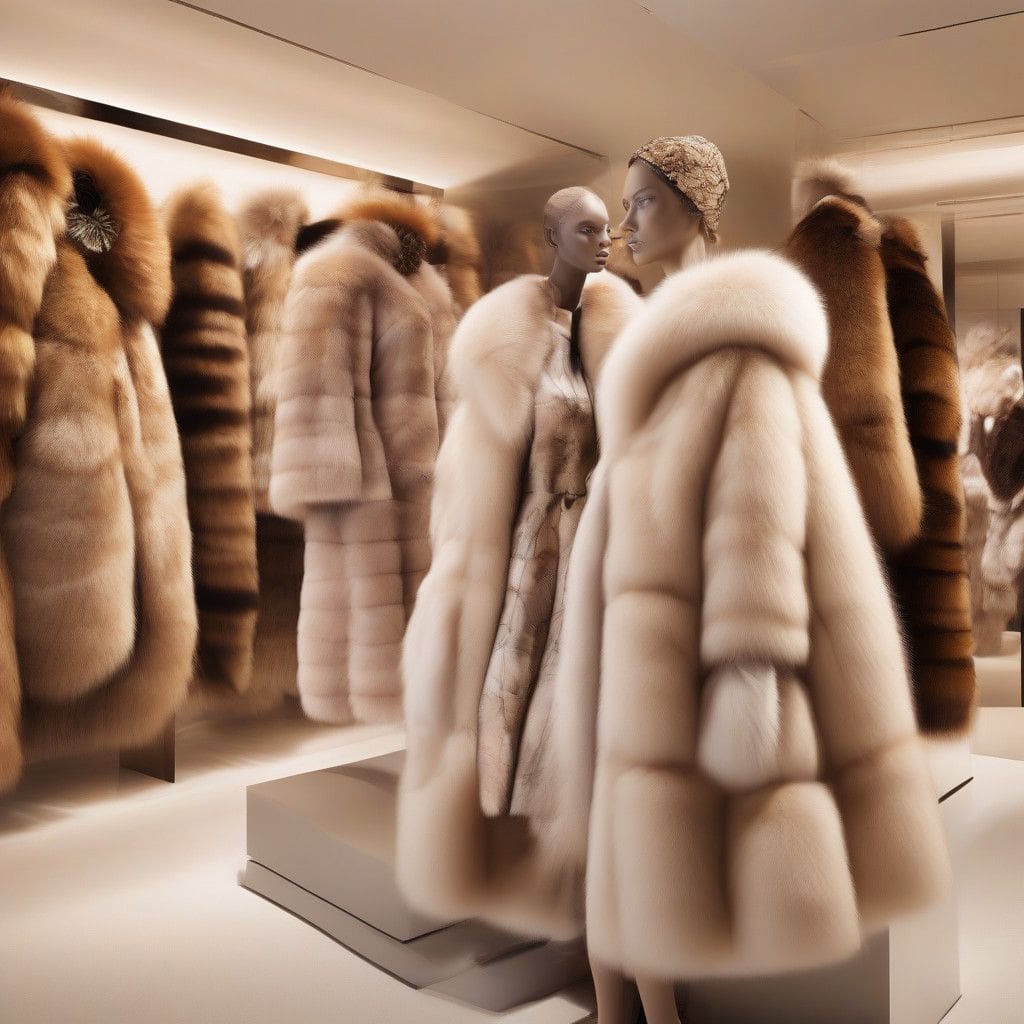The global fur industry is confronted with significant obstacles, contributing to a shift in its overall market value. From a peak of $14.7 billion in 2013, the value of global fur exports has drastically fallen to just $3.4 billion in the previous year. This stark decline points towards a larger market trend, one that shows no signs of reversing. The pressures brought by cultural shifts, animal welfare advocacy, political regulation, and the tumultuous geopolitical landscape all play significant roles in this downturn.
Consumer attitudes toward fur have evolved considerably within the past decade. The surge of social media has amplified the voices of animal rights groups, rendering fur less acceptable among consumers in many Western culture. A notable moment occurs in the rom-com series “Nobody Wants This,” where Kristen Bell’s character dons a chinchilla coat, only to be publicly shamed by partygoers. This representation not only showcases shifting perceptions but also indicates a broader cultural aversion to fur.
Major brands have increasingly abandoned fur as part of their commitment to sustainability and ethical considerations. Gucci led this movement by declaring fur as passé in 2017, inspiring countless other prominent brands to follow suit. Calvin Klein, Ralph Lauren, and Tommy Hilfiger each adopted fur-free policies, while major retailers like Selfridges and Neiman Marcus have implemented similar bans. Moreover, fashion magazines are mirroring a shift in values, with Elle announcing a fur-free initiative in 2021.
Political actions are intensifying this trend, too. Legislation in California and Israel has effectively restricted fur sales. New York is currently mulling similar decisions, as Switzerland considers banning the importation of fur sourced from inhumane practices. Meanwhile, countries like Poland and Romania are also taking steps to phase out fur farming, driven by societal pressures and changing consumer sensitivities.
The COVID-19 pandemic further struck the fur industry with severe repercussions. Outbreaks at European mink farms led to a significant drop in production, dismantling Denmark’s status as one of the largest mink producers globally. As Russia’s war in Ukraine disrupts vital trade channels, and China’s economic downturn affects market dynamics, the industry is witnessing not just a decline in sales, but a crisis of confidence in fur as a commodity.
To address the declining fortunes, industry stakeholders are implementing an “elevation strategy.” This approach aims to reframe fur as not just a luxurious product, but a sustainable and artisanal choice rooted in ethical practices. Central to this effort is the introduction of the Furmark certification, which attempts to demonstrate adherence to humane animal welfare standards. However, critics remain skeptical, viewing this certification as insufficient and a mere façade for ongoing unethical practices.
LVMH, a leading luxury conglomerate and a notable holdout within the fashion industry regarding fur ban policies, plays a pivotal role in the fur market’s dynamics. With brands like Louis Vuitton and Dior frequently showcasing fur, LVMH’s support contributes significantly to the industry’s visibility. Despite the conglomerate only accounting for a minor share of the global fur market, its influence is profound due to its prestigious positioning within the luxury fashion sphere. Mark Oaten, CEO of the International Fur Federation, emphasizes this point, noting that LVMH’s presence holds substantial weight in the industry, particularly following Gucci’s exit from fur.
However, this support is increasingly tested. Animal rights advocates vocally challenge LVMH, notably following the appointment of Pharrell Williams as Louis Vuitton’s men’s creative director. Advocates have targeted events and screenings to raise awareness and rally against the use of fur in luxury fashion, implying that consumer sentiments can gradually force larger structural changes, even within powerful conglomerates.
LVMH maintains that it is committed to sourcing fur ethically, pointing out that almost all the fur utilized is Furmark certified. The luxury group states, “Our intention is to offer to clients who desire fur products made in the most responsible and ethical way possible.” Despite these assertions, Oaten bluntly remarks that while protestors may pose challenges, they do not represent the buying demographic of luxury brands that continue to sell fur.
In conclusion, the global fur industry’s future hangs in precarious balance as it navigates cultural, political, and market shifts. The industry’s strategy to elevate fur’s position and reputation faces skepticism amidst an ever-demanding consumer landscape, pushing brands to reconsider their commitments to sustainability and ethical sourcing of materials. The response of luxury fashion conglomerates like LVMH and smaller brands will determine the trajectory of fur in the global market.












